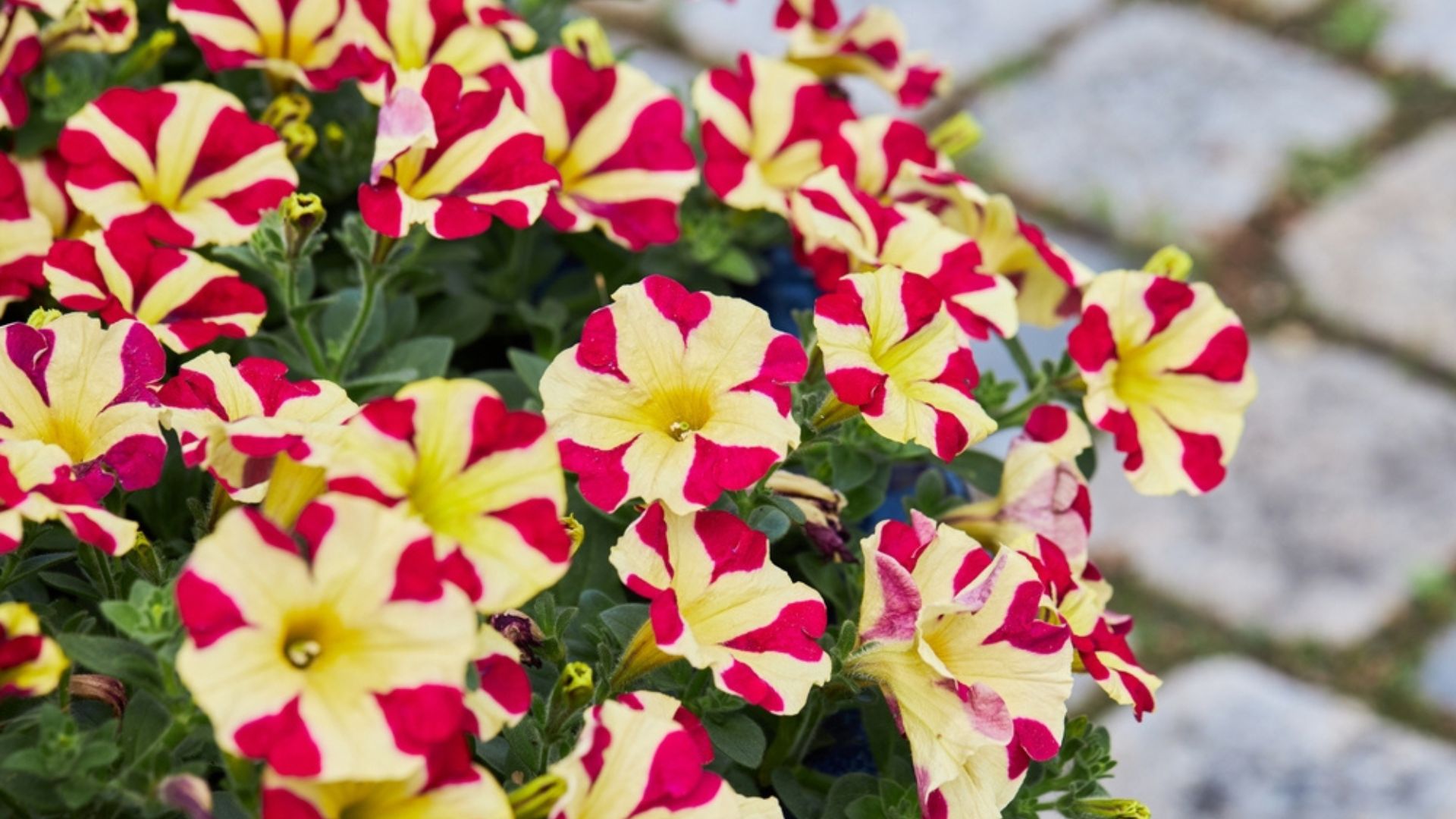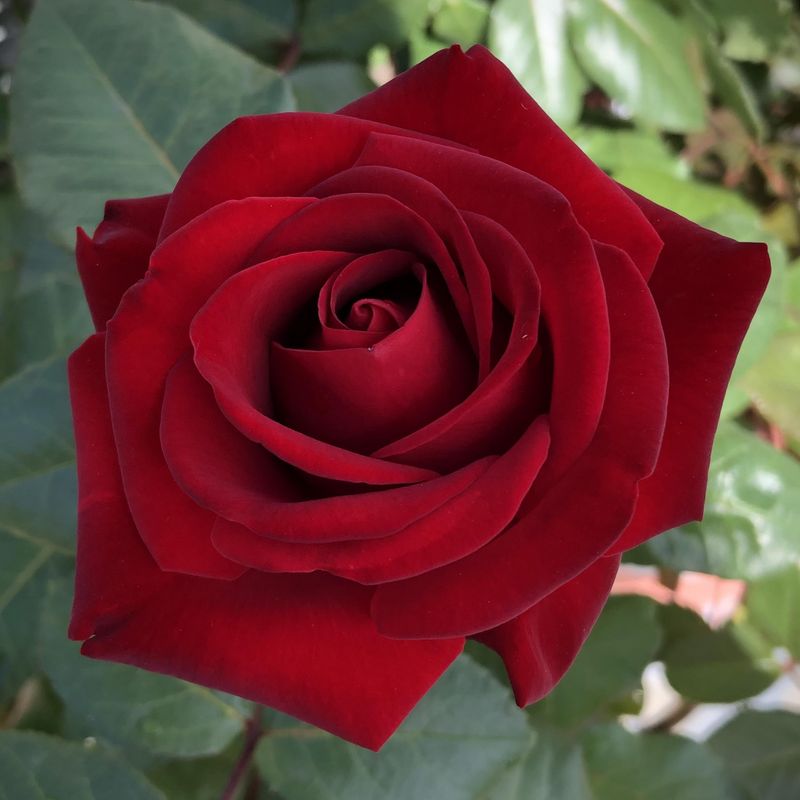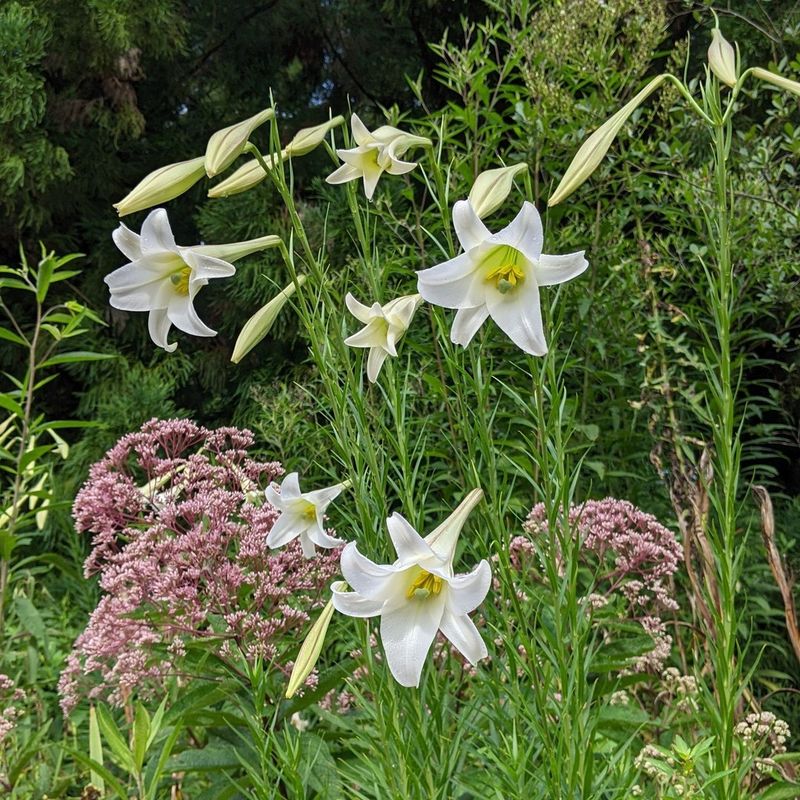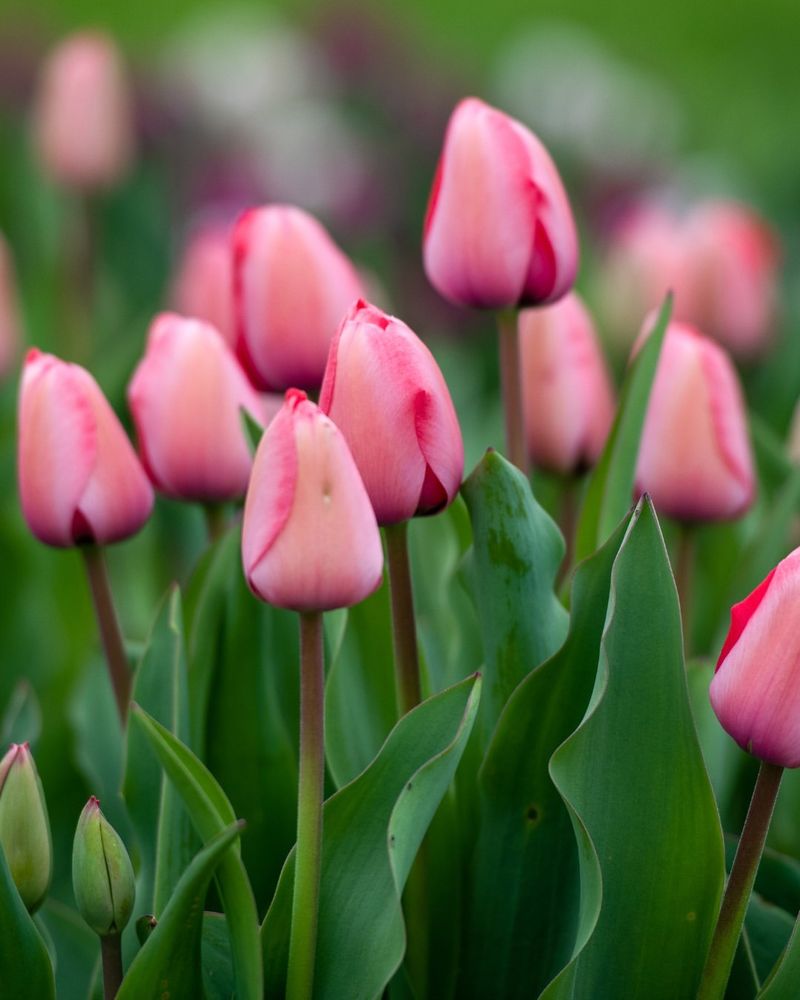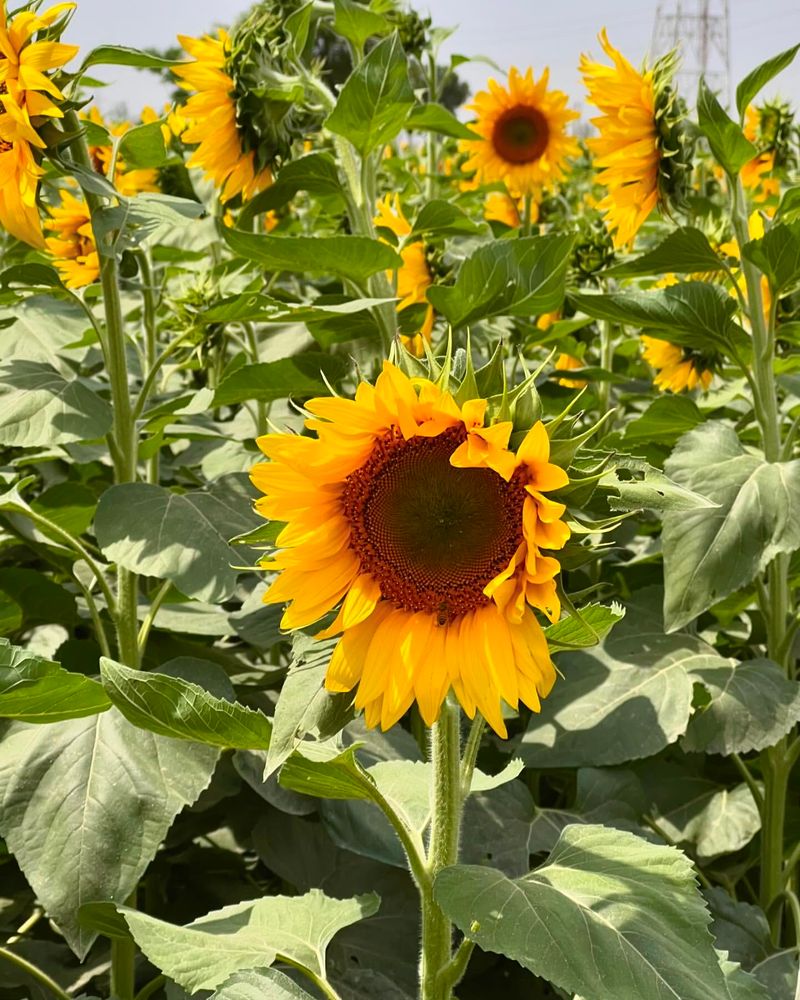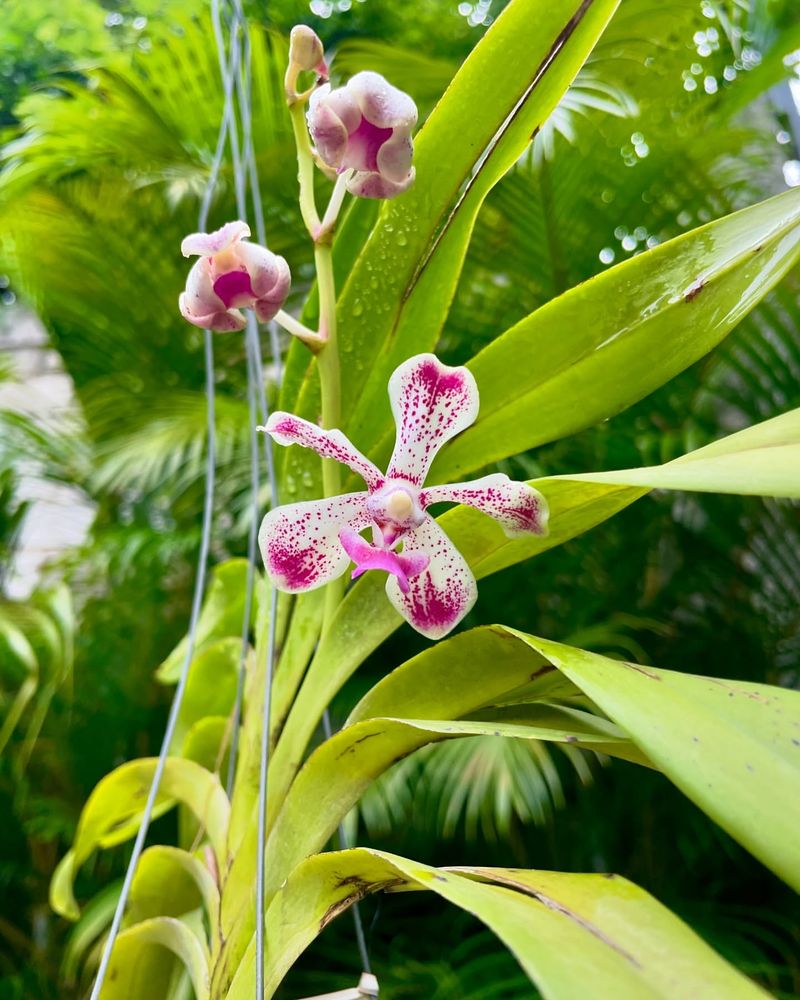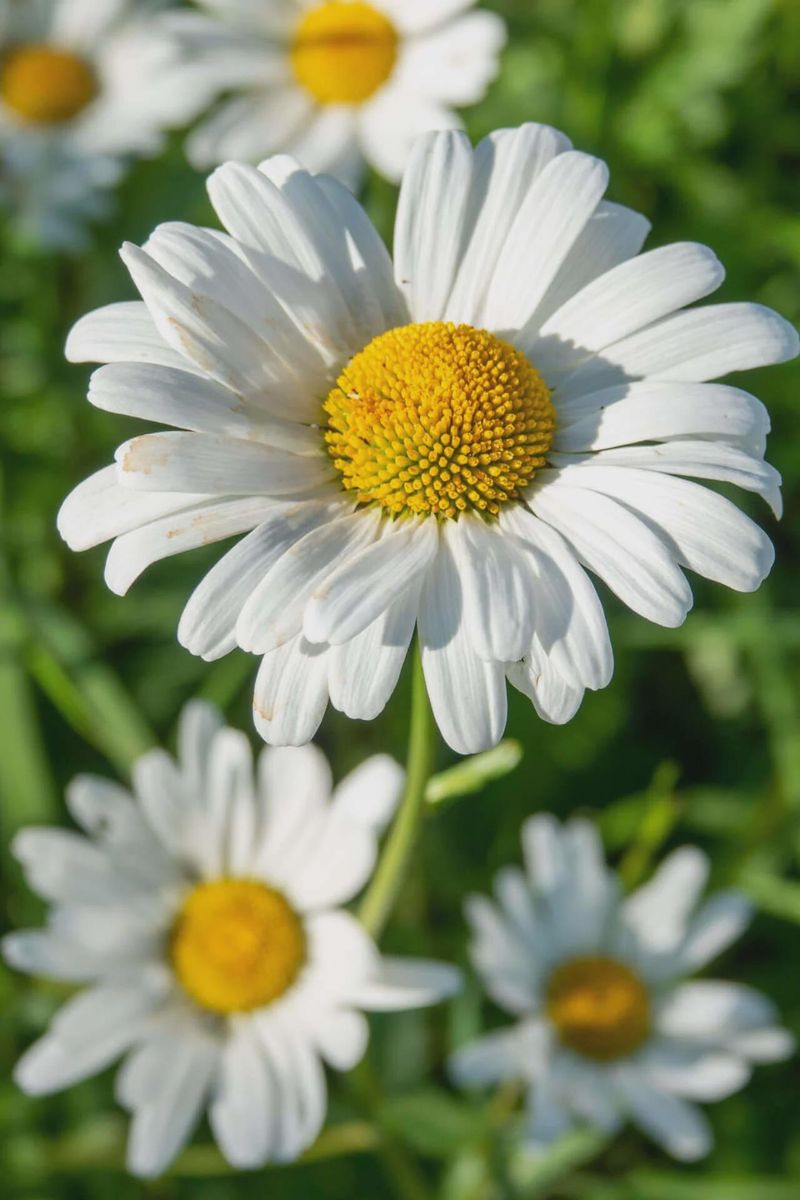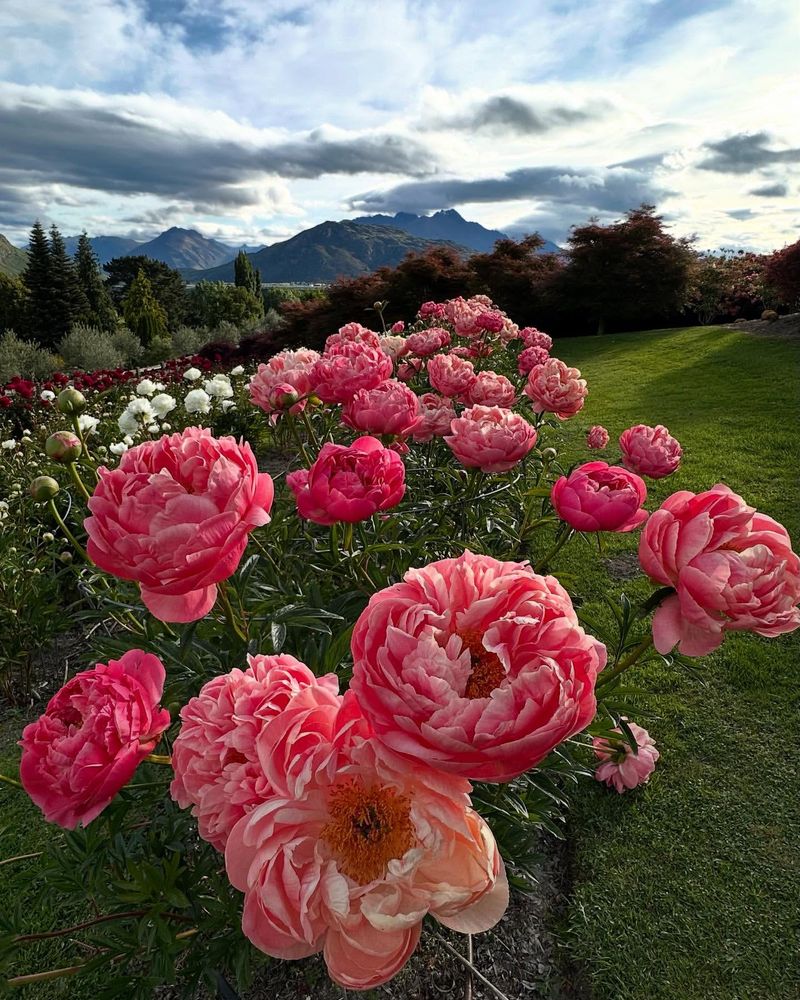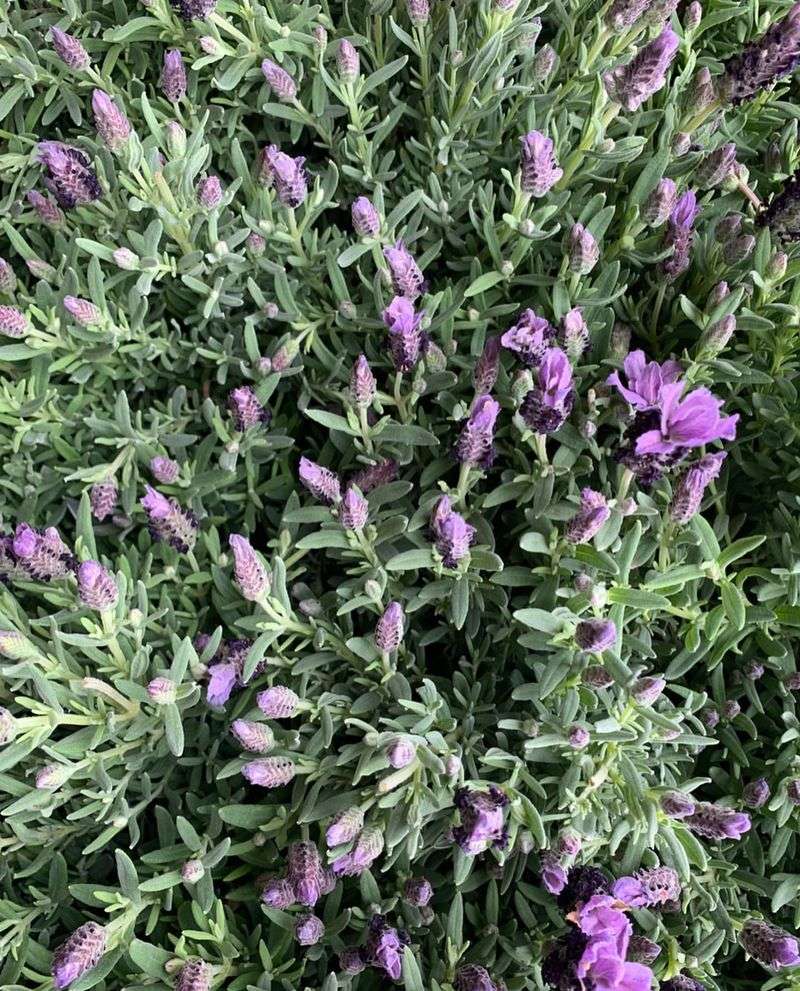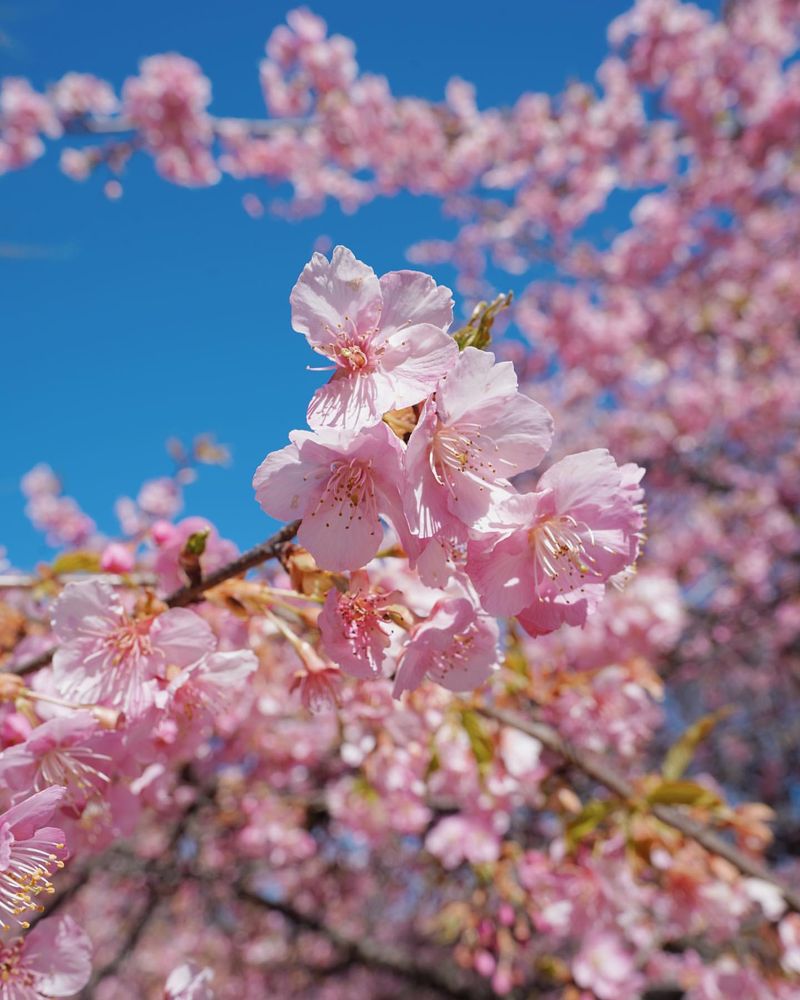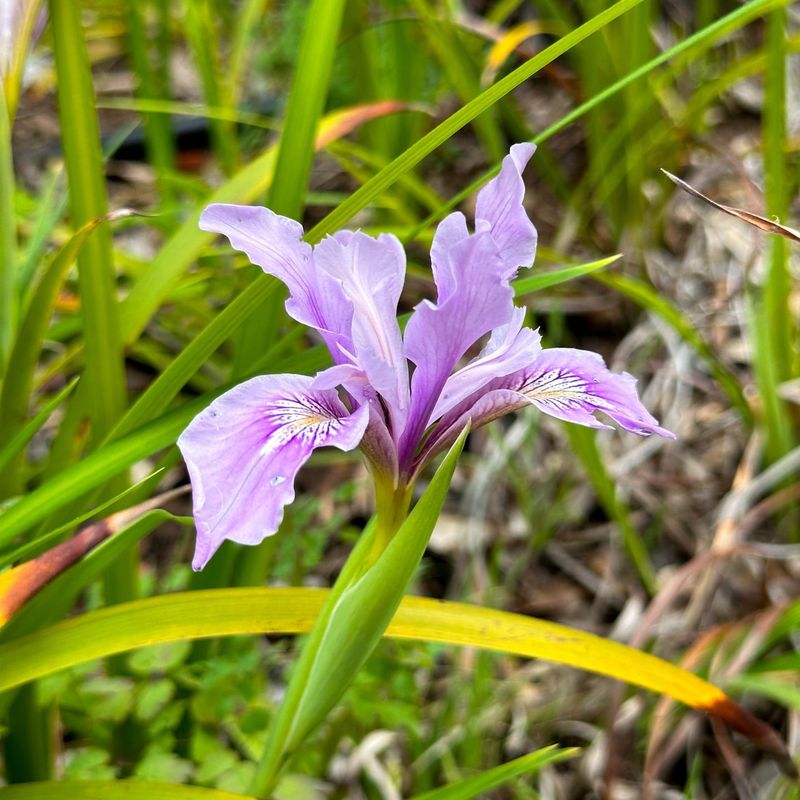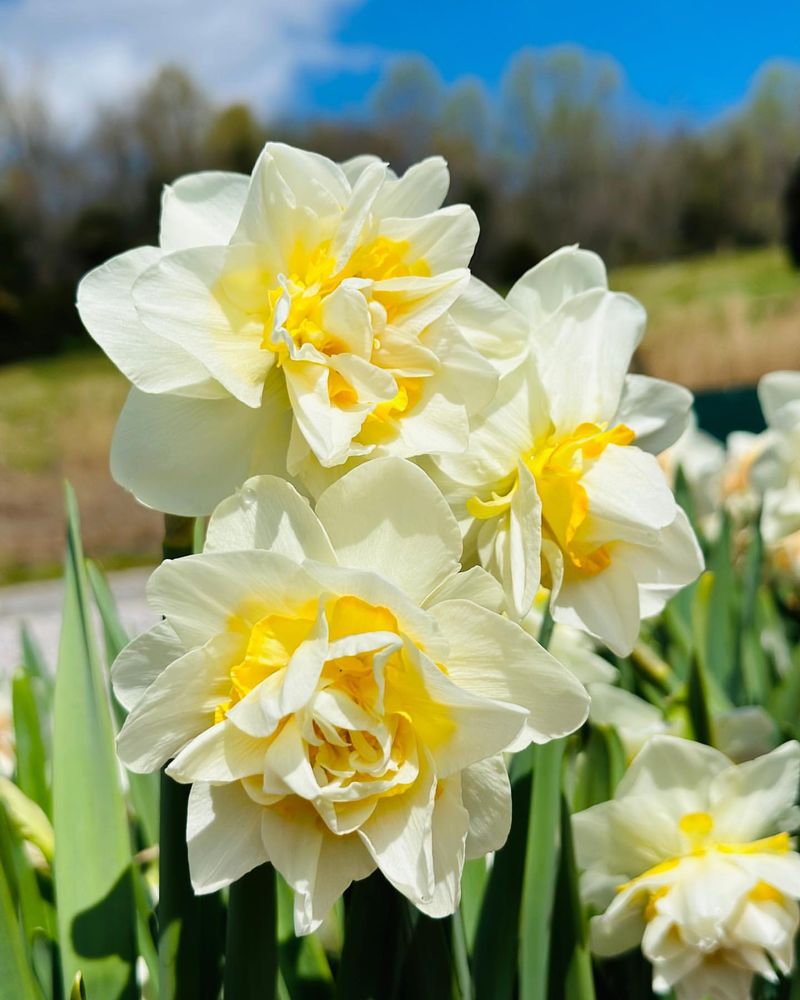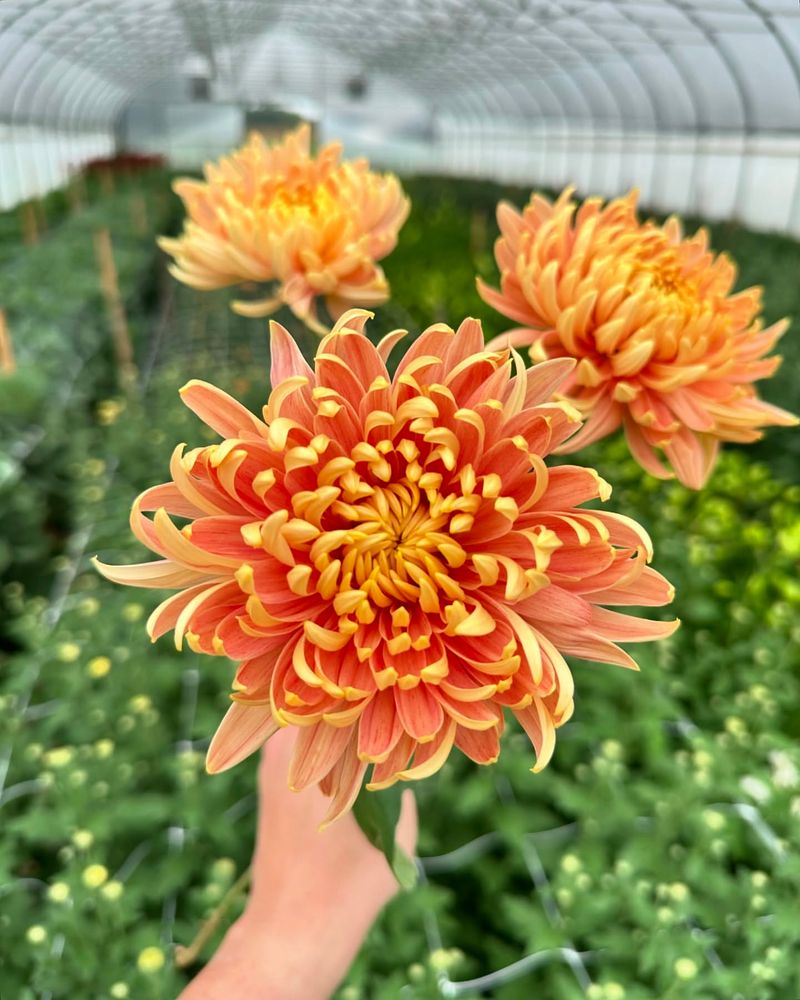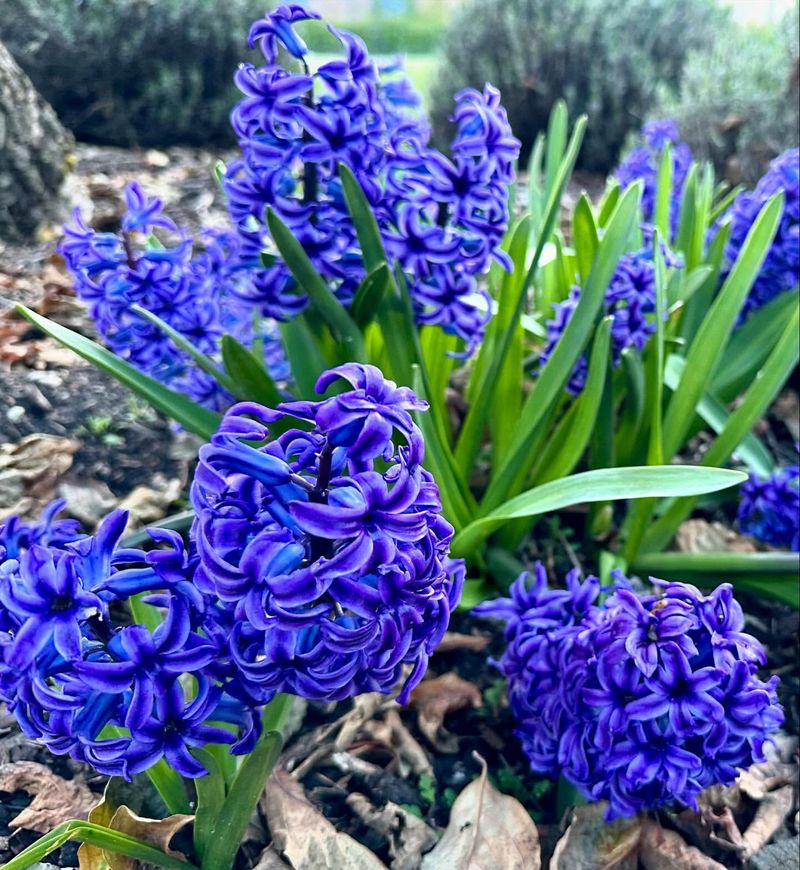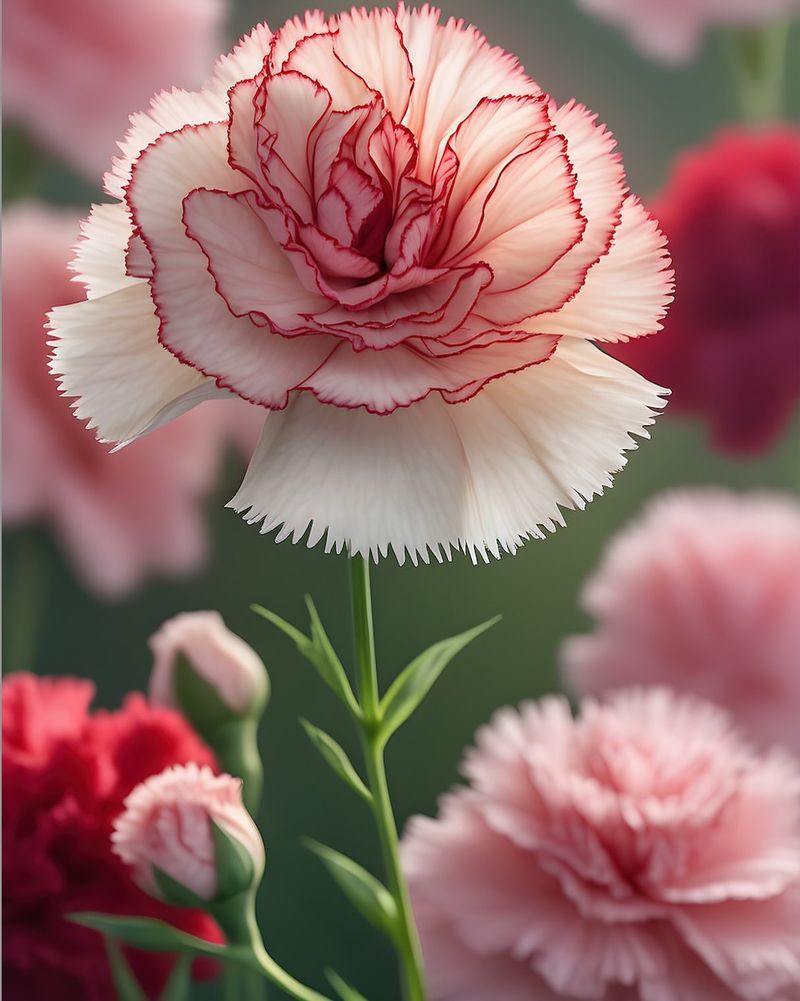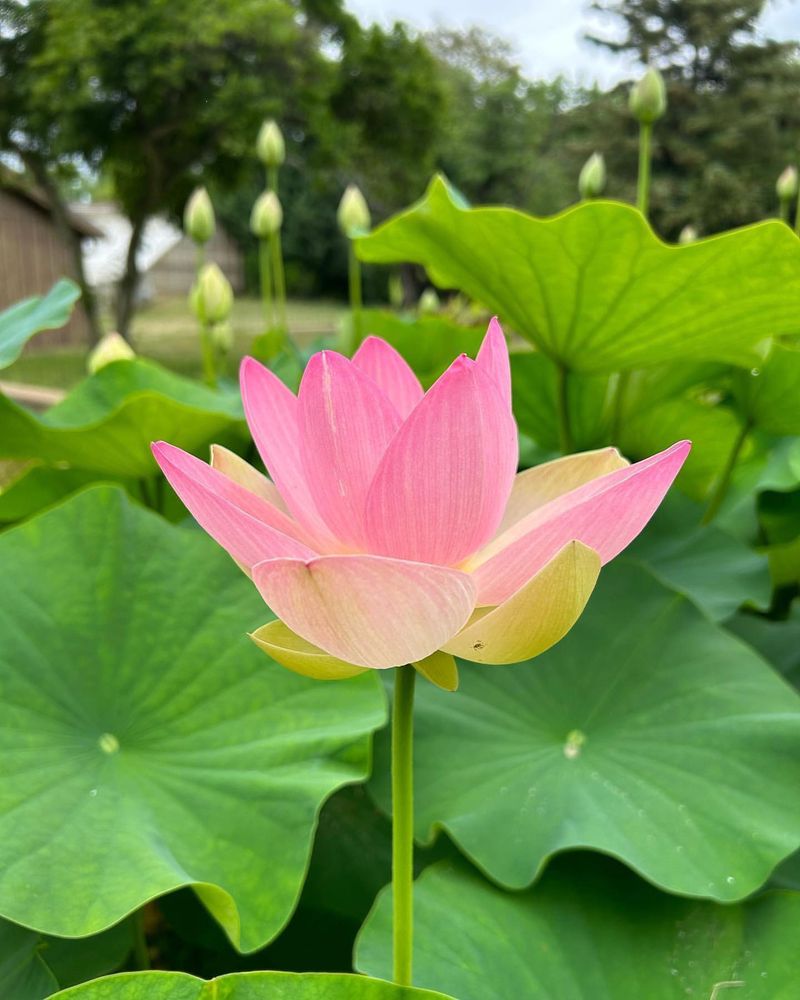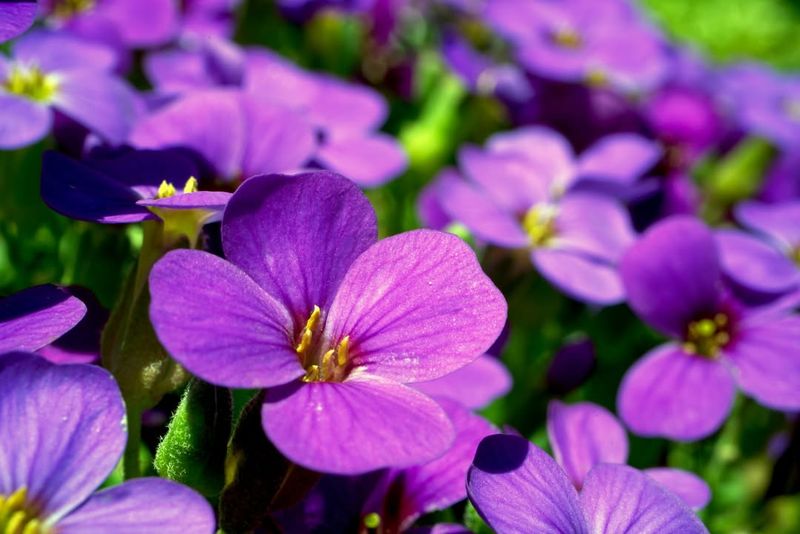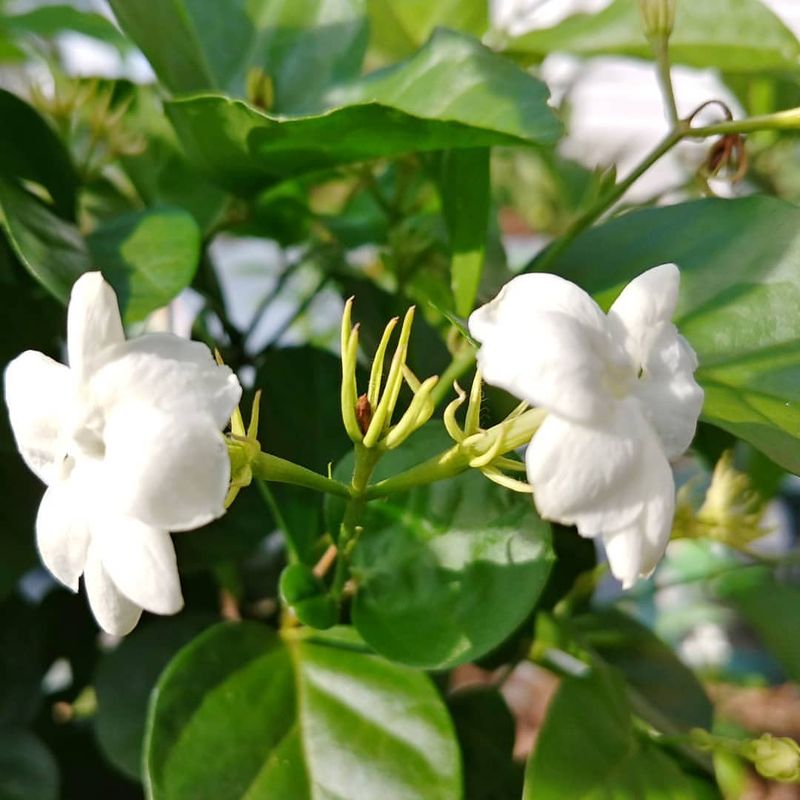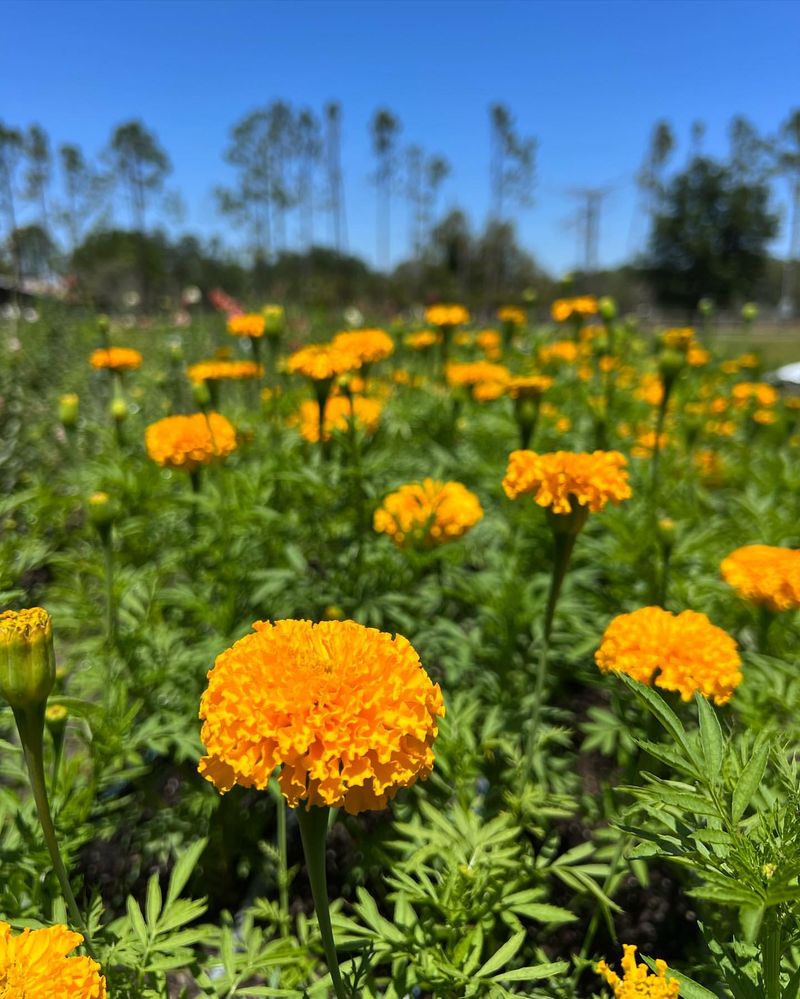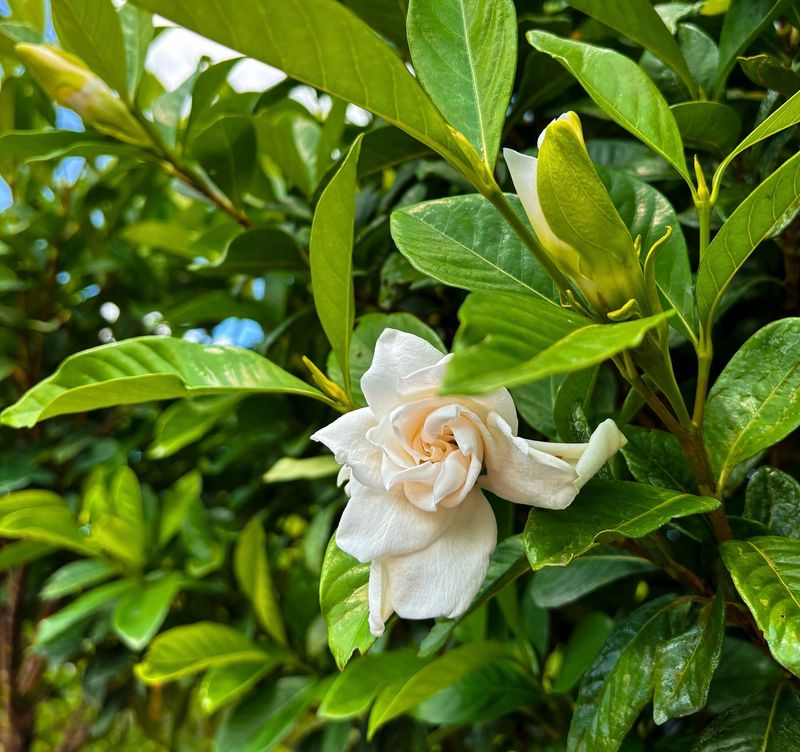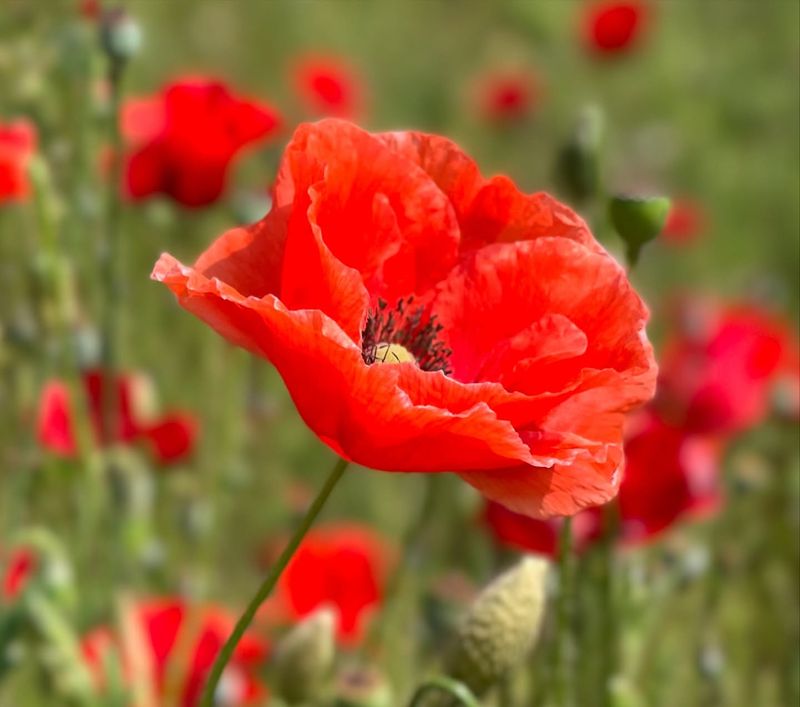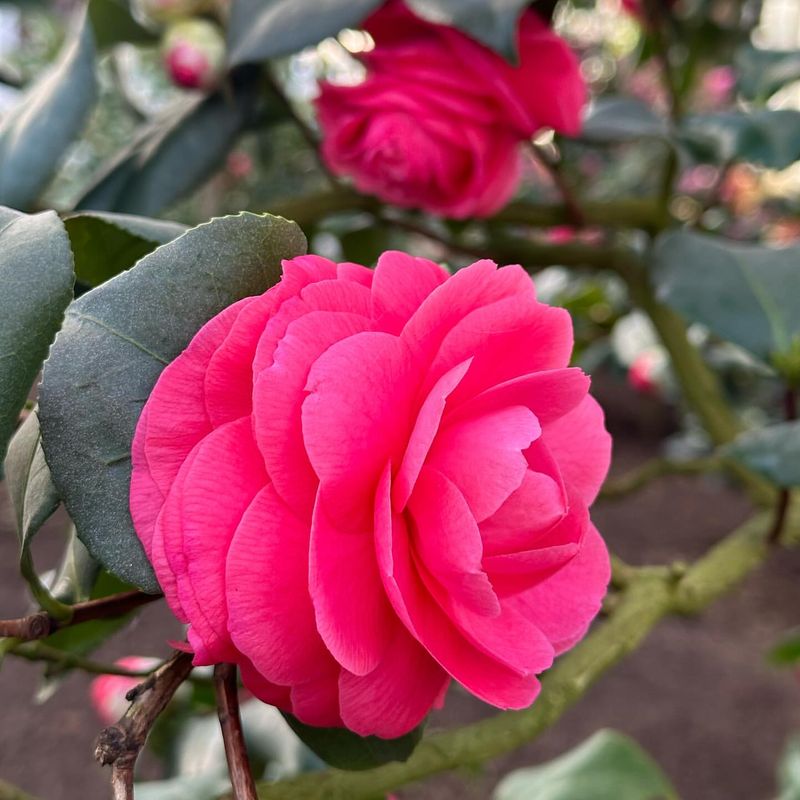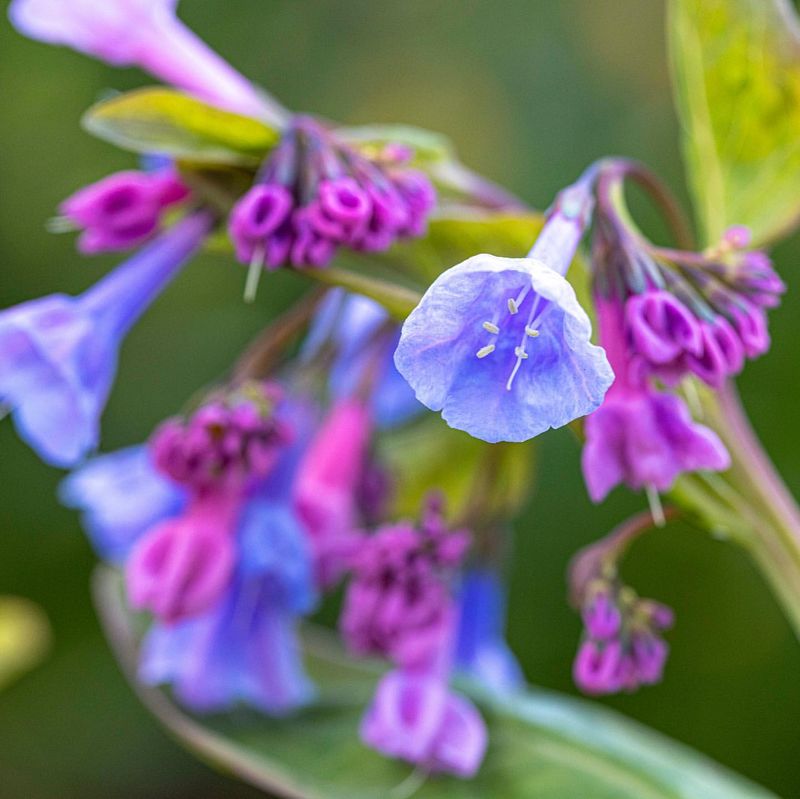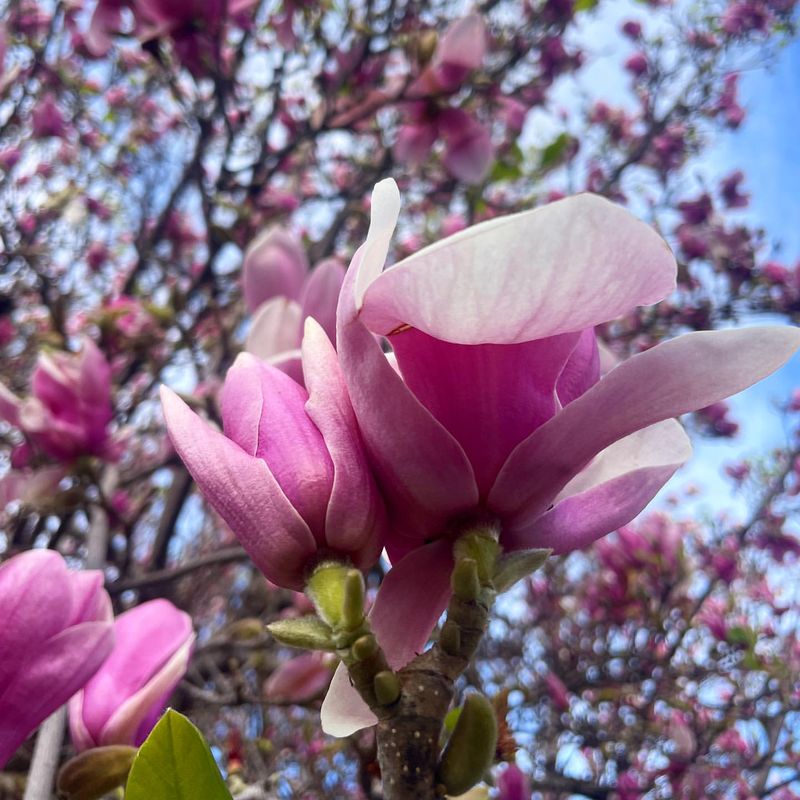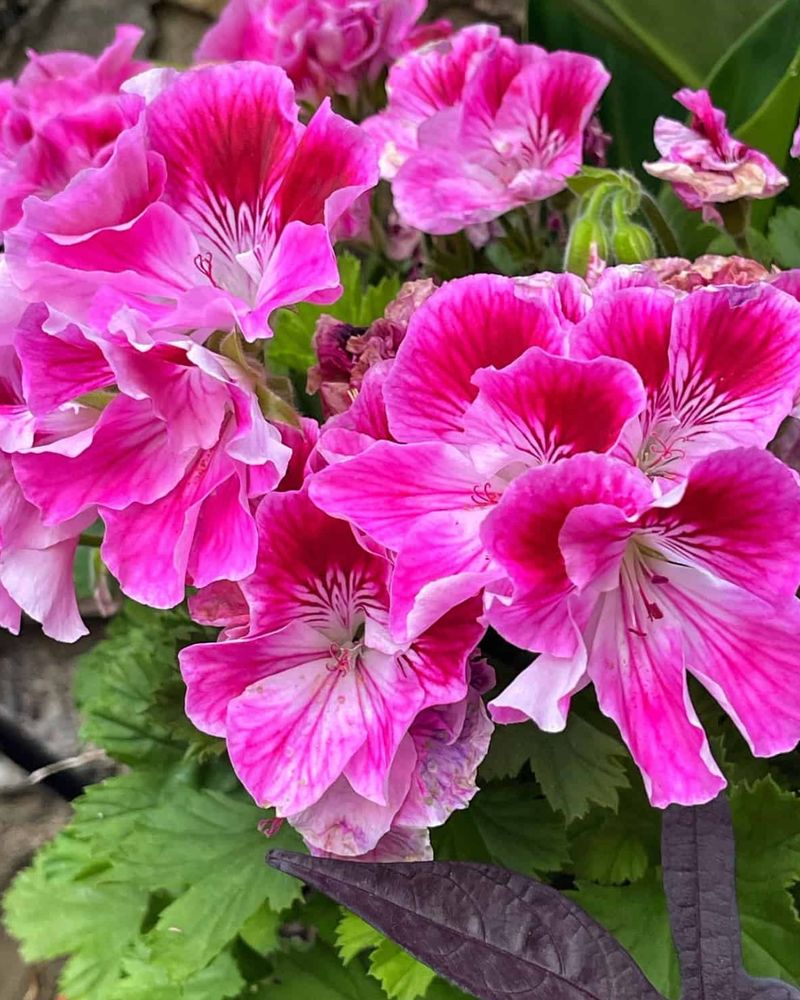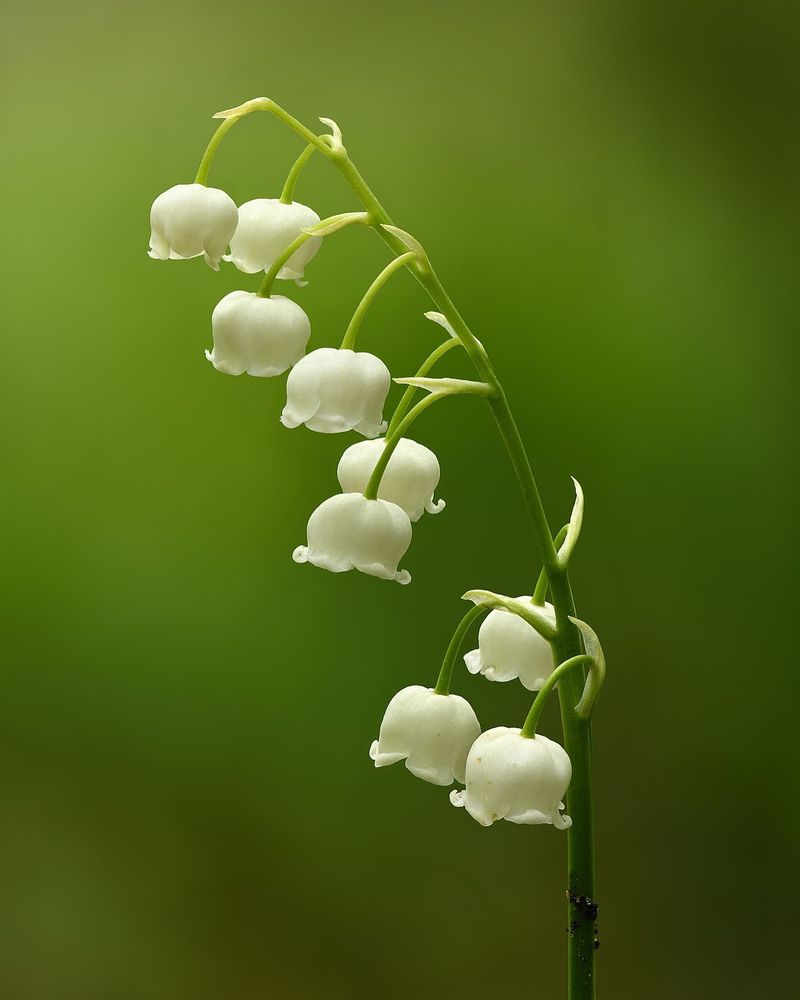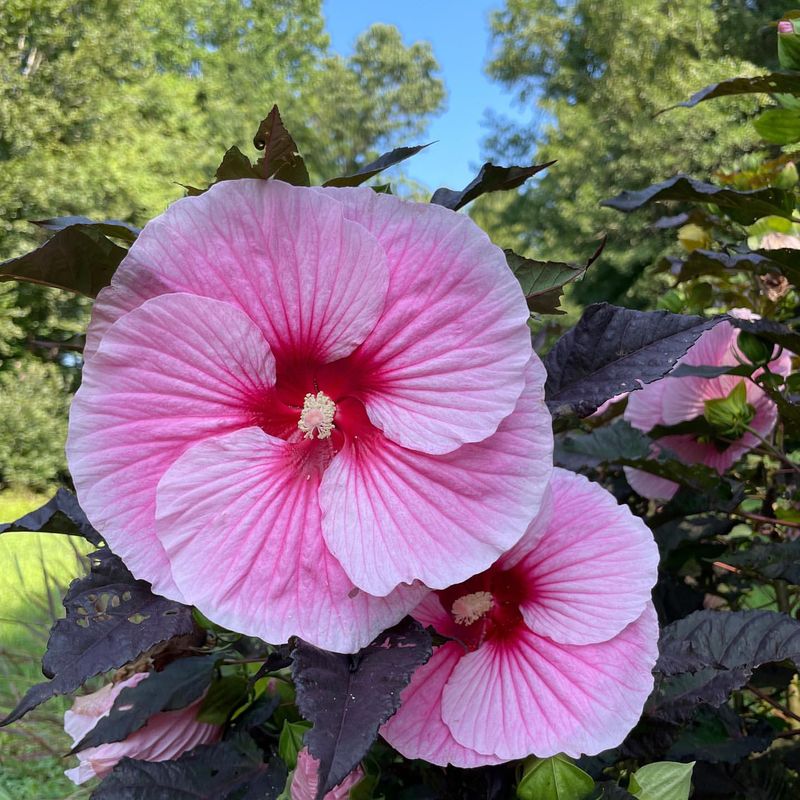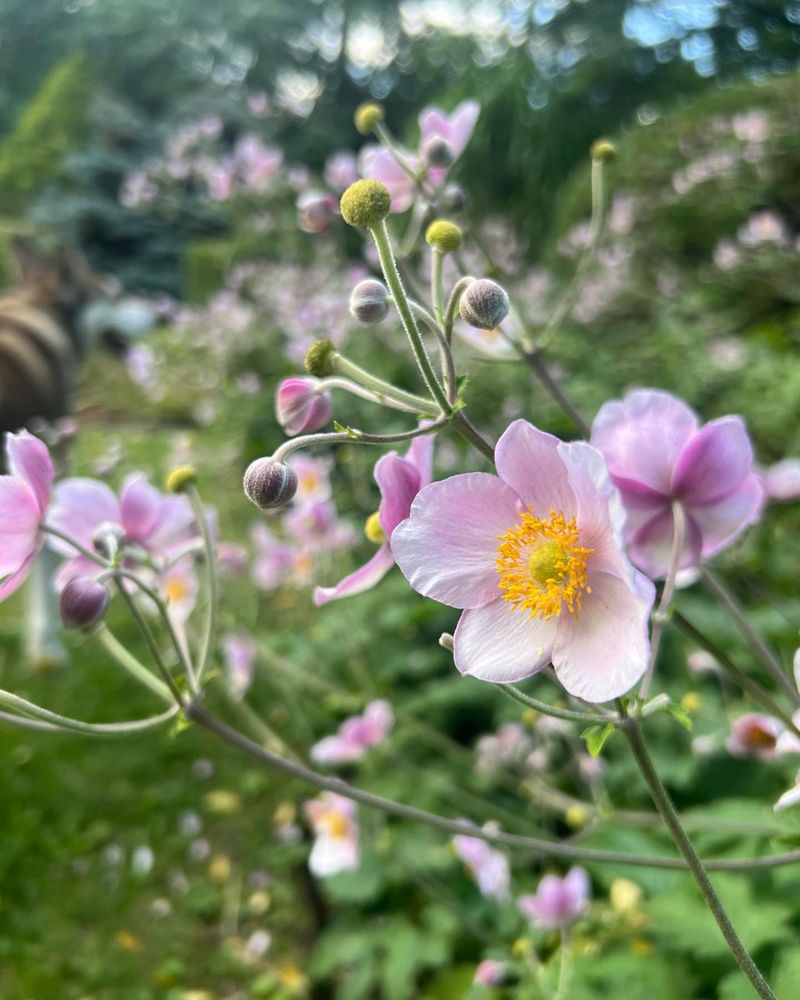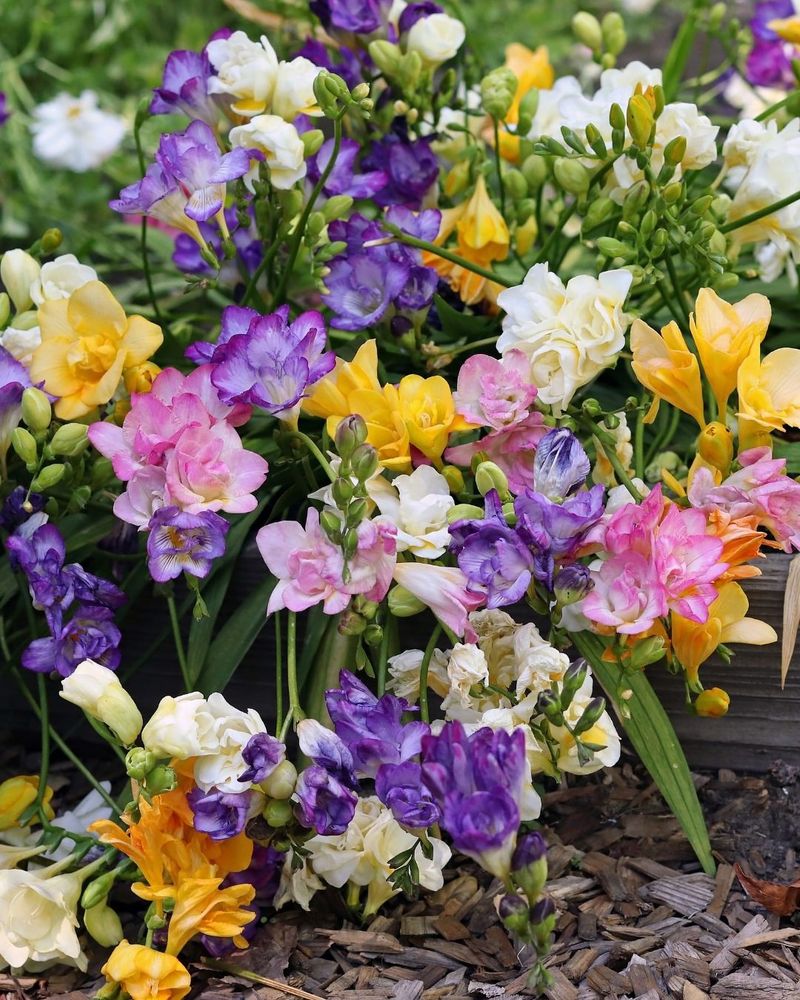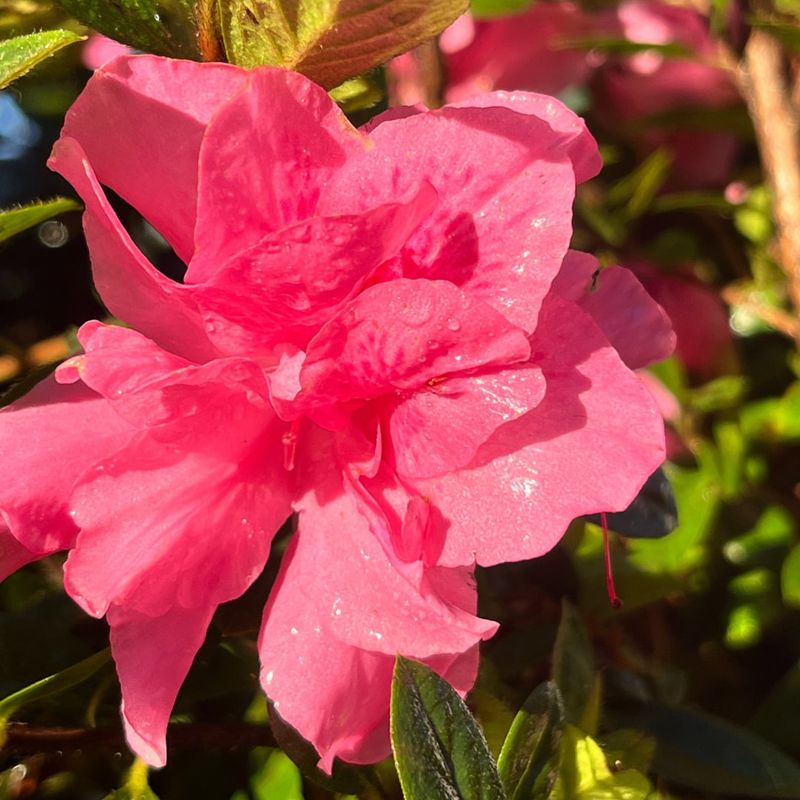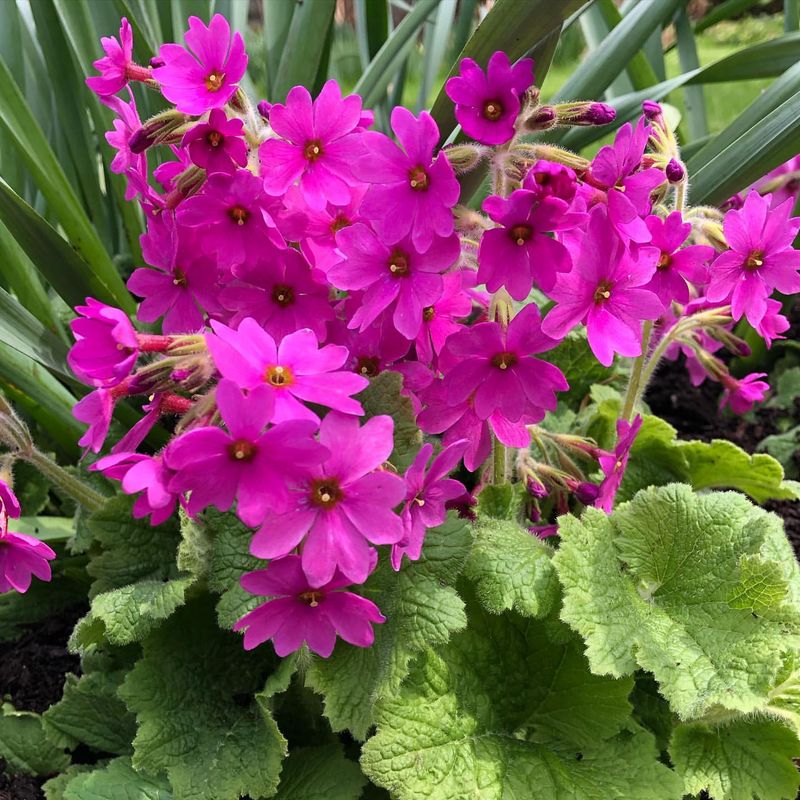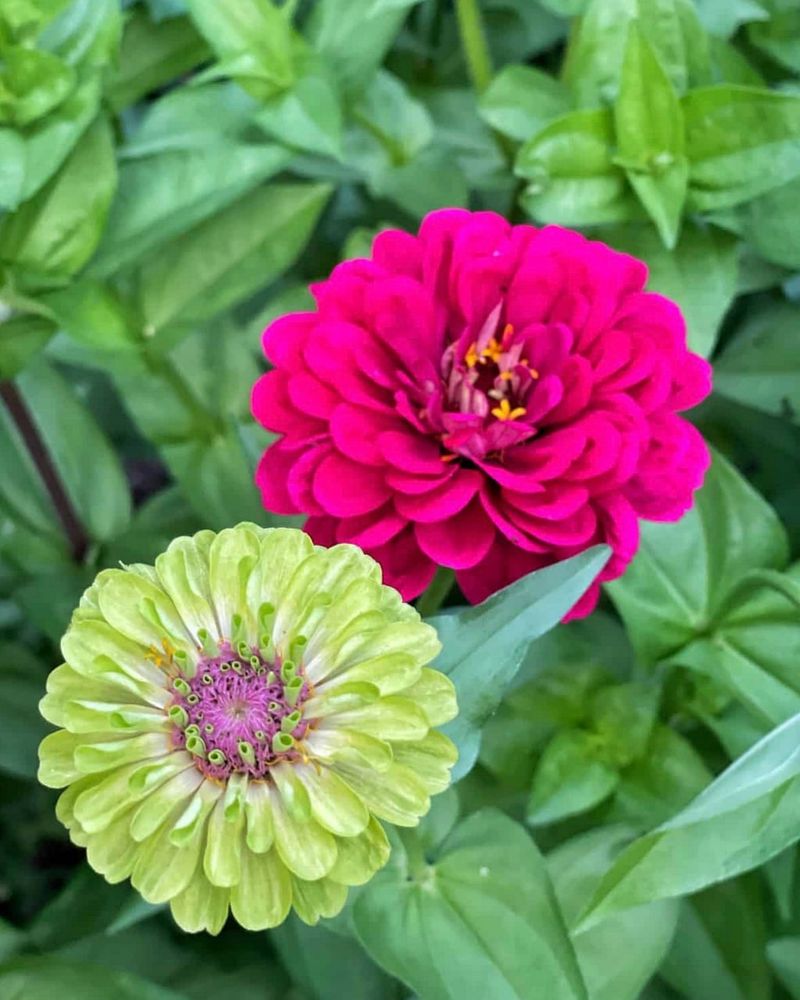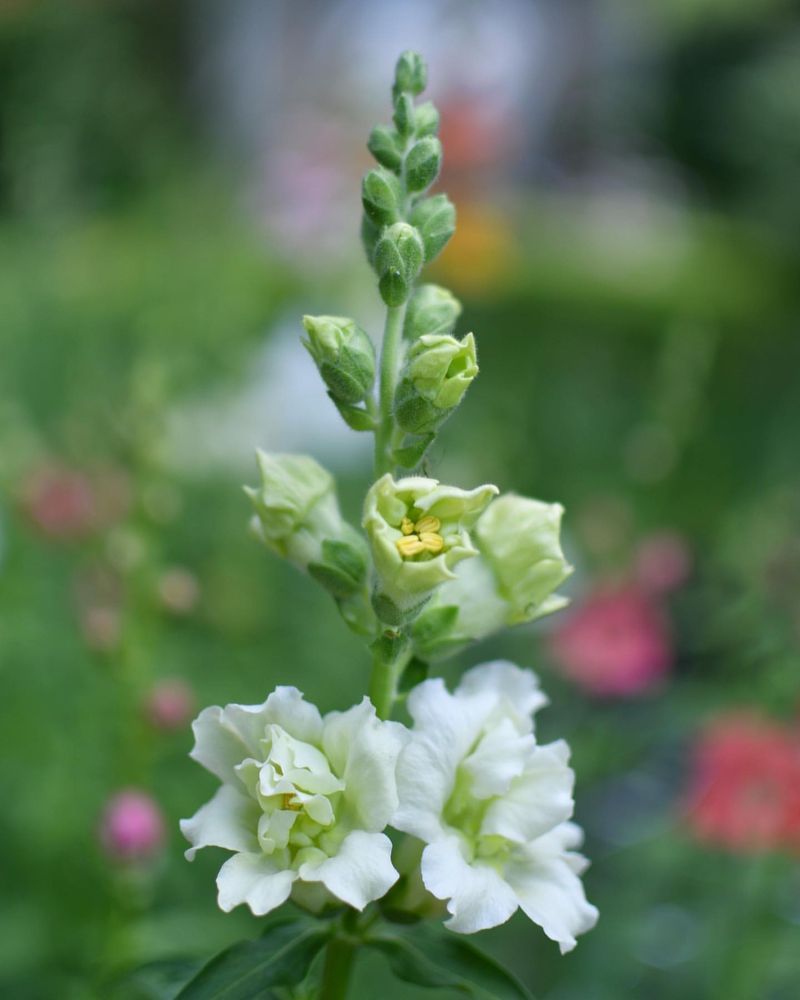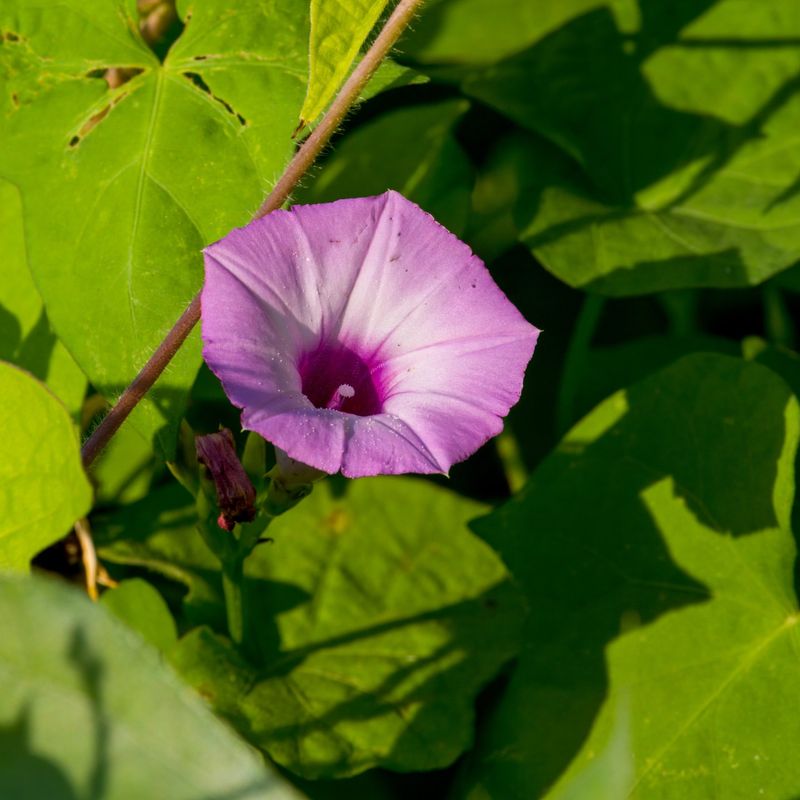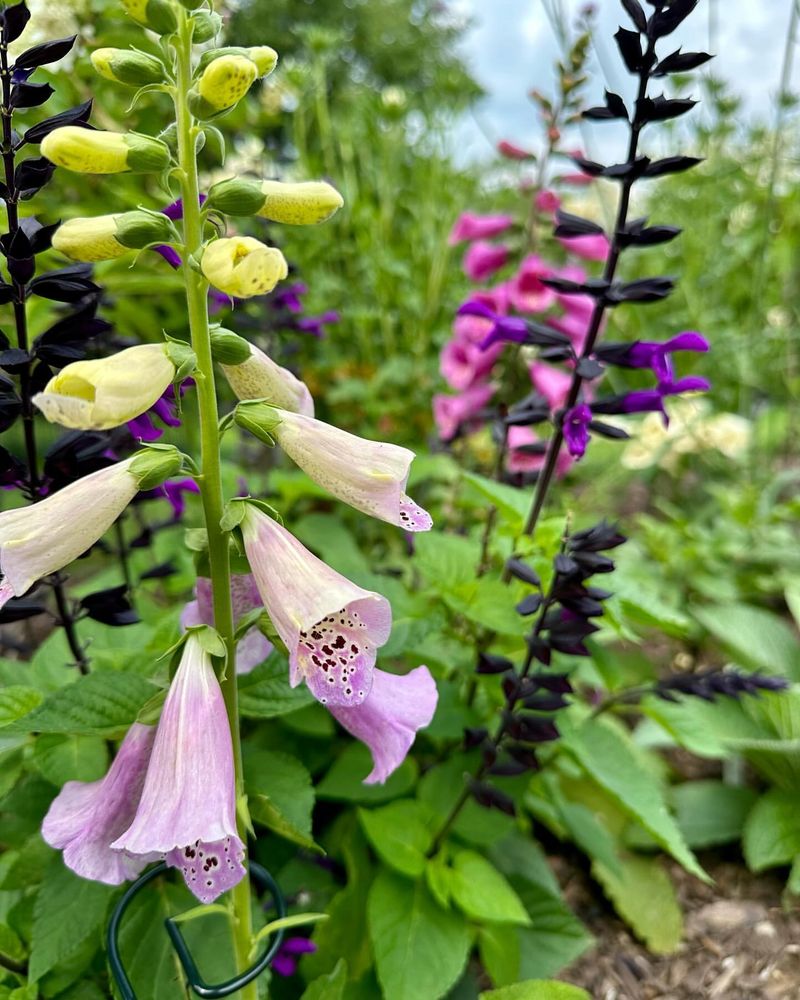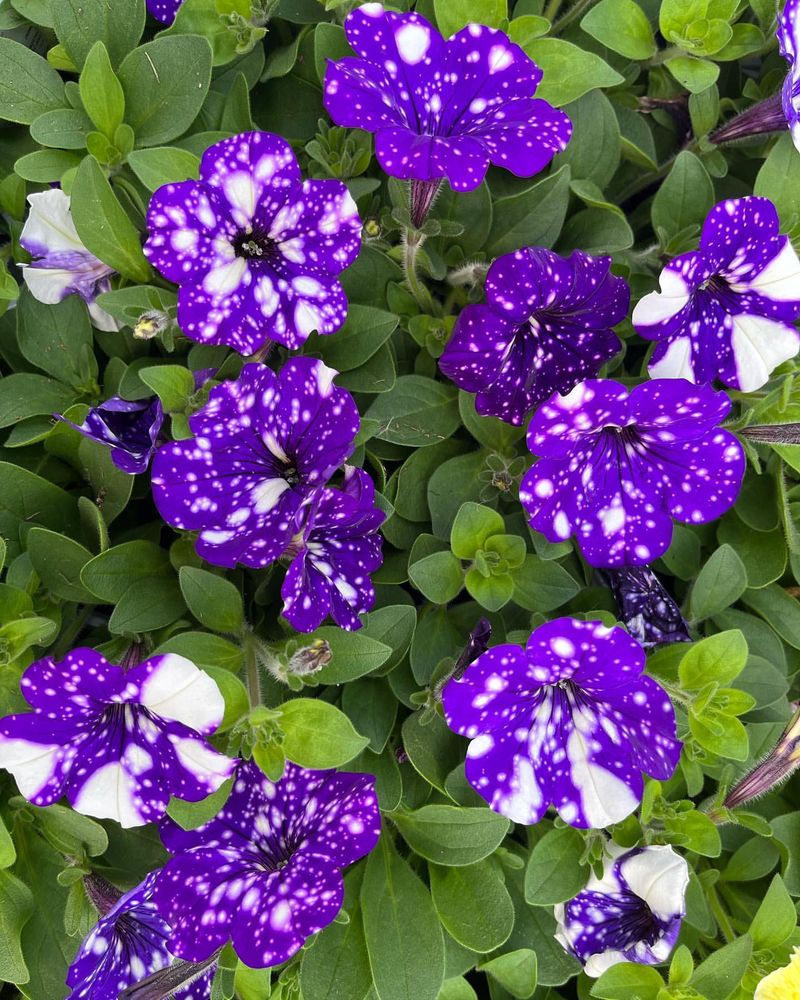Flowers have long been revered for their beauty and the stories they tell without words. Each blossom carries its own unique symbolism, enriched by history and culture. As you wander through the garden of meanings, you’ll discover that flowers offer insights into emotions, relationships, and life itself.
Whether given as gifts, used in ceremonies, or simply admired in nature, these blooms are more than just eye-catching wonders; they are storytellers in their own right. Embark on this floral journey and unearth the hidden tales behind 35 stunning blooms that speak the language of the heart.
1. Rose
Symbolizing love and passion, the rose is an iconic flower cherished worldwide. Its velvety petals and enchanting fragrance captivate hearts. Roses come in many colors, each carrying its own meaning. A red rose, for instance, is synonymous with romantic love, while a yellow rose conveys friendship.
Historically, roses have been used in poetry and art, representing beauty and emotion. In gardens or bouquets, they continue to be a favorite choice for expressing affection and admiration. Their timeless charm makes them a perfect gift for loved ones, conveying messages of the heart.
2. Lily
Purity and renewal are beautifully embodied by the lily. This elegant flower graces many gardens with its serene presence. Lilies are often associated with rebirth and new beginnings, making them popular in weddings and Easter celebrations. The white lily, in particular, symbolizes innocence and virtue.
Artists and writers have long drawn inspiration from its graceful form. In various cultures, lilies are revered as sacred flowers, believed to bring peace and harmony. Whether in bloom in nature or as part of a floral arrangement, lilies uplift the spirit with their ethereal beauty.
3. Tulip
Love and prosperity find expression in the vibrant tulip. Bursting forth in spring, tulips are a beloved sight in gardens and fields. Their smooth petals and bold colors make them a symbol of joy and optimism. Historically, tulips were highly prized and even sparked a financial craze known as “Tulip Mania” in the 17th century.
Each hue holds its own significance, with red tulips symbolizing deep love, while purple ones represent royalty. Whether gifted as a token of affection or admired in nature, tulips bring warmth and happiness to any setting.
4. Sunflower
Radiating warmth and positivity, the sunflower stands tall and proud. Known for its vibrant yellow petals and large, round face, the sunflower is a joyful presence in any landscape. It symbolizes adoration, loyalty, and longevity.
Sunflowers follow the sun’s path across the sky, a phenomenon known as heliotropism, embodying the idea of seeking light and positivity. In art and literature, they often represent happiness and vitality. Whether grown in a garden or given as a cheerful bouquet, sunflowers brighten the day with their sunny disposition and inspiring nature.
5. Orchid
Beauty and strength are intertwined in the exquisite orchid. This delicate yet resilient flower thrives in diverse environments, from tropical rainforests to home gardens. Orchids symbolize love, luxury, and strength, admired for their intricate patterns and stunning colors.
They are often associated with rare beauty and sophistication. In many cultures, orchids are given as symbols of admiration and respect. Their unique appearance and exotic nature make them a captivating addition to floral arrangements and a cherished gift for special occasions. Orchids inspire with their elegant allure and grace.
6. Daisy
Innocence and joy blossom in the cheerful daisy. With its simple white petals and sunny center, the daisy is a symbol of purity and new beginnings. Often associated with childhood and playfulness, daisies evoke a sense of carefree happiness.
They are commonly used in garlands and bouquets to convey purity and innocence. In folklore, daisies are linked to love and fertility, often woven into bridal wreaths. Their unassuming beauty and gentle charm make daisies a beloved choice for gardens and floral displays, bringing a touch of happiness and simplicity.
7. Peony
Romance and prosperity bloom in the lush peony. Known for its large, fragrant blossoms, the peony is a favorite in gardens and floral arrangements. It symbolizes love, honor, and wealth. In many cultures, peonies are seen as omens of good fortune and happy marriages.
Their opulent appearance and sweet scent make them popular in weddings and celebrations. Artists and poets often capture their beauty, reflecting themes of romance and abundance. Whether given as a gift or admired in a garden, peonies inspire with their elegance and promise of prosperity.
8. Lavender
Calm and tranquility are enveloped in the soothing fragrance of lavender. This aromatic herb is cherished for its calming properties, often used in essential oils and sachets. Lavender symbolizes serenity, grace, and devotion. Its soft purple blooms are a common sight in gardens and fields.
Historically, lavender has been used for relaxation and healing. In folklore, it is believed to ward off evil and bring peace. Whether enjoyed in a garden or as part of a calming ritual, lavender soothes the soul with its gentle scent and tranquil presence.
9. Cherry Blossom
Beauty and the fleeting nature of life are elegantly captured by the cherry blossom. These delicate pink flowers are a symbol of renewal and the transience of existence. In Japan, cherry blossoms, or sakura, are celebrated during hanami, a tradition of viewing the blooms.
They represent the beauty and brevity of life, reminding us to cherish each moment. Cherry blossoms have inspired countless works of art and literature, embodying themes of beauty and impermanence. Their breathtaking display in springtime is a reminder of life’s fleeting, yet beautiful, moments.
10. Iris
Faith and wisdom unfold in the elegant iris. With its striking petals and distinctive form, the iris is a symbol of hope and valor. Often associated with royalty and heraldry, this flower carries meanings of admiration and courage. The iris’s name comes from Greek mythology, where it was linked to the goddess Iris, the messenger between gods and humans.
Its diverse colors and regal appearance make it a popular choice in gardens and floral arrangements. Whether given as a token of esteem or admired for its beauty, the iris captivates with its grace and symbolism.
11. Daffodil
Rebirth and new beginnings are heralded by the cheerful daffodil. These vibrant yellow flowers are a sign of spring and renewal. Daffodils are often associated with hope and optimism, their bright blooms lifting spirits after winter’s cold. In folklore, they are linked to good fortune and prosperity.
The daffodil is a symbol of resilience, reminding us that after darkness, light will follow. Whether celebrated in gardens or given as a cheerful bouquet, daffodils inspire with their sunny appearance and promise of new beginnings.
12. Chrysanthemum
Longevity and joy blossom in the colorful chrysanthemum. Known for its varied hues and full blooms, this flower is a symbol of happiness and well-being. In many cultures, chrysanthemums are associated with autumn and harvest festivals, representing abundance and prosperity.
They are often used in celebrations as symbols of joy and optimism. In Japan, the chrysanthemum is revered as a national symbol of the emperor and the imperial family. Whether adorning a garden or displayed in a bouquet, chrysanthemums bring warmth and cheer with their vibrant colors and positive symbolism.
13. Hyacinth
Sincerity and playfulness find expression in the charming hyacinth. These fragrant flowers bloom in a variety of colors, each with its own meaning. Hyacinths are often associated with rebirth and the coming of spring. In Greek mythology, they were connected to the tragic tale of Hyacinthus, whose blood was said to have given rise to the flower.
The purple hyacinth, in particular, symbolizes deep sincerity and affection. Whether admired in a garden or gifted to convey heartfelt emotions, hyacinths captivate with their delightful fragrance and playful charm.
14. Carnation
Gratitude and admiration are beautifully expressed through the carnation. These ruffled blooms are a favorite in bouquets and floral arrangements. Each color carries its own meaning, with pink carnations symbolizing a mother’s love and gratitude. Historically, carnations have been used in celebrations and ceremonies, representing different emotions and virtues.
Their long-lasting blooms and sweet fragrance make them a popular choice for expressing heartfelt sentiments. Whether given as a gift or used in decorations, carnations add a touch of elegance and meaning to any occasion.
15. Lotus
Enlightenment and purity are embodied in the serene lotus. This sacred flower blooms above murky waters, symbolizing spiritual awakening and the triumph of purity over adversity. In many cultures, the lotus is revered as a symbol of enlightenment and rebirth.
Its delicate petals and tranquil presence have inspired countless works of art and spiritual teachings. The lotus’s ability to rise from the mud and bloom in beauty is a reminder of resilience and inner strength. Whether admired in nature or depicted in art, the lotus captivates with its profound symbolism and grace.
16. Violet
Modesty and affection thrive in the delicate violet. These charming flowers are often found growing in shaded woodlands, their heart-shaped leaves and gentle blooms adding a touch of color to the forest floor. Violets are associated with humility and devotion, their sweet fragrance and subtle beauty captivating hearts.
In folklore, they are linked to love and romance, often given as tokens of affection. Whether enjoyed in a garden or as part of a floral arrangement, violets bring a sense of tranquility and warmth with their modest charm and tender symbolism.
17. Jasmine
Love and sensuality are woven into the intoxicating scent of jasmine. This delicate vine blooms with enchanting white flowers, releasing their fragrance in the cool of dusk. Jasmine is often associated with romance and purity, its seductive scent capturing hearts. In many cultures, jasmine is used in ceremonies and rituals, symbolizing beauty and love.
Its fragrant blooms are a popular choice for perfumes and essential oils. Whether admired in a garden or experienced through its aroma, jasmine enchants with its alluring presence and timeless appeal.
18. Marigold
Passion and creativity ignite in the vibrant marigold. These bold flowers are a staple in gardens and celebrations, their fiery hues symbolizing warmth and energy. Marigolds are often associated with the sun and are used in festivals and ceremonies to honor the divine.
In many cultures, they are seen as symbols of passion and creativity, inspiring artists and writers alike. Their bright colors and strong fragrance make them a favorite for garlands and decorations. Whether used to celebrate a special occasion or admired in a garden, marigolds bring a burst of joy and creativity.
19. Gardenia
Purity and secret love are whispered in the fragrant gardenia. This elegant flower blooms with pristine white petals, its sweet scent enchanting the night. Gardenias are often associated with beauty and purity, their delicate blooms a symbol of secret love. In many cultures, they are used in weddings and romantic ceremonies to convey admiration and devotion.
Their intoxicating fragrance and timeless beauty have inspired poets and lovers throughout history. Whether given as a token of affection or enjoyed in a moonlit garden, gardenias captivate with their romantic allure and subtle elegance.
20. Poppy
Remembrance and hope blossom in the striking poppy. These vibrant red flowers are often associated with commemoration, particularly in honoring fallen soldiers. Poppies symbolize both remembrance and the promise of new beginnings.
Their delicate petals and bold color create a striking contrast against the landscape. In literature and art, poppies are used to convey themes of sacrifice and renewal. Whether worn as a symbol of remembrance or admired in a field, poppies inspire with their poignant beauty and enduring symbolism.
21. Camellia
Admiration and perfection are embodied in the exquisite camellia. These elegant blooms are cherished for their delicate petals and graceful form. Camellias symbolize beauty and refinement, often associated with admiration and ideal love. In many cultures, they are used in ceremonies and celebrations to convey appreciation and respect.
Their soft colors and luxurious appearance make them a popular choice for floral arrangements and gardens. Whether given as a gift or admired in nature, camellias inspire with their timeless beauty and perfect symmetry.
22. Bluebell
Humility and gratitude bloom in the enchanting bluebell. These delicate flowers carpet ancient woodlands with their soft blue hues, creating a mesmerizing sight in spring. Bluebells symbolize humility and gratitude, their gentle presence inspiring peace and reflection.
In folklore, they are linked to fairy magic and are said to ring with the sound of fairy bells. Their ephemeral beauty and quiet charm make them a beloved symbol of the natural world. Whether enjoyed in a woodland walk or depicted in art, bluebells remind us of the simple joys and wonders of nature.
23. Magnolia
Dignity and beauty are elegantly displayed in the magnolia. These majestic trees bloom with large, fragrant flowers, their presence a symbol of strength and grace. Magnolias are often associated with southern charm and hospitality, their blossoms representing dignity and beauty. In many cultures, they are used in ceremonies and celebrations to convey respect and admiration.
Their striking blooms and lush foliage make them a popular choice for gardens and landscapes. Whether admired in a southern garden or celebrated in floral arrangements, magnolias captivate with their timeless elegance and grandeur.
24. Geranium
Friendship and positivity flourish in the vibrant geranium. These cheerful flowers are a favorite in window boxes and gardens, their bright blooms a symbol of warmth and optimism. Geraniums are often associated with friendship and trust, their presence bringing a sense of comfort and joy. In folklore, they are linked to protection and good fortune.
Their diverse colors and long-lasting blooms make them a popular choice for decorations and gifts. Whether given to a friend or enjoyed in a garden, geraniums inspire with their cheerful appearance and positive symbolism.
25. Lily of the Valley
Sweetness and humility are beautifully embodied in the lily of the valley. These delicate flowers bloom with tiny, bell-shaped blossoms, their fragrance enchanting the senses. Lily of the valley symbolizes purity and sweetness, often used in weddings and ceremonies to convey love and devotion.
In folklore, they are linked to happiness and the return of joy. Their gentle beauty and sweet scent make them a beloved choice for gardens and bouquets. Whether given as a token of affection or admired in nature, lily of the valley captivates with its subtle elegance and tender symbolism.
26. Hibiscus
Passion and delicate beauty are exquisitely displayed in the hibiscus. These tropical flowers bloom with large, vibrant petals, their presence a symbol of love and femininity. Hibiscus flowers are often associated with passion and desire, their bold colors capturing hearts.
In many cultures, they are used in celebrations and rituals to convey affection and admiration. Their exotic appearance and enchanting fragrance make them a popular choice for gardens and floral arrangements. Whether adorned in a lei or admired in a tropical paradise, hibiscus inspires with its captivating beauty and passionate symbolism.
27. Anemone
Anticipation and protection bloom in the delicate anemone. These charming flowers are often found in meadows and gardens, their soft petals swaying gracefully in the breeze. Anemones symbolize hope and protection, their presence inspiring a sense of peace and tranquility.
In folklore, they are linked to the arrival of spring and the renewal of life. Their gentle beauty and subtle charm make them a popular choice for floral arrangements and gardens. Whether given as a gift or admired in nature, anemones captivate with their ethereal allure and timeless symbolism.
28. Freesia
Innocence and thoughtfulness find expression in the delicate freesia. These fragrant flowers bloom in a variety of colors, each with its own meaning. Freesias are often associated with friendship and trust, their sweet scent captivating hearts.
In many cultures, they are used in celebrations and ceremonies to convey affection and gratitude. Their graceful form and enchanting fragrance make them a popular choice for bouquets and floral arrangements. Whether given to express appreciation or admired for their beauty, freesias inspire with their gentle charm and thoughtful symbolism.
29. Azalea
Abundance and family blossom in the vibrant azalea. These colorful flowers are a favorite in gardens and landscapes, their lush blooms symbolizing prosperity and unity. Azaleas are often associated with home and family, their presence bringing a sense of warmth and comfort.
In many cultures, they are used in celebrations and rituals to honor the bonds of family and community. Their stunning appearance and cheerful colors make them a popular choice for decorations and gifts. Whether enjoyed in a garden or celebrated in festivals, azaleas inspire with their joyful presence and meaningful symbolism.
30. Primrose
Youth and optimism bloom in the cheerful primrose. These delicate flowers are often found in meadows and gardens, their bright yellow blooms a symbol of spring and new beginnings. Primroses are associated with youth and vitality, their presence inspiring hope and happiness.
In folklore, they are linked to the arrival of spring and the renewal of life. Their gentle beauty and cheerful colors make them a beloved choice for floral arrangements and gardens. Whether admired in a meadow or celebrated in a bouquet, primroses captivate with their joyful presence and timeless charm.
31. Zinnia
Endurance and lasting affection bloom in the vibrant zinnia. These cheerful flowers are a favorite in gardens and bouquets, their bright colors a symbol of friendship and constancy. Zinnias are often associated with endurance and lasting affection, their presence bringing joy and happiness. In many cultures, they are used in celebrations and ceremonies to convey love and appreciation.
Their diverse colors and long-lasting blooms make them a popular choice for decorations and gifts. Whether given to a friend or admired in a garden, zinnias inspire with their cheerful appearance and positive symbolism.
32. Snapdragon
Grace and resilience flourish in the colorful snapdragon. These unique flowers are a favorite in gardens and floral arrangements, their vibrant blooms symbolizing strength and beauty. Snapdragons are often associated with grace and resilience, their presence inspiring admiration and respect.
In folklore, they are linked to protection and magic, their bright colors and distinctive shape captivating hearts. Their diverse hues and long-lasting blooms make them a popular choice for decorations and gifts. Whether adorning a garden path or celebrated in a bouquet, snapdragons captivate with their graceful appearance and inspiring symbolism.
33. Morning Glory
Renewal and affection blossom in the enchanting morning glory. These delicate flowers bloom with the dawn, their vibrant colors a symbol of new beginnings and hope. Morning glories are often associated with love and devotion, their presence inspiring joy and happiness.
In folklore, they are linked to the renewal of life and the promise of a new day. Their graceful form and cheerful colors make them a popular choice for gardens and floral arrangements. Whether admired in a trellis or celebrated in a bouquet, morning glories captivate with their gentle charm and positive symbolism.
34. Foxglove
Healing and intuition thrive in the mystical foxglove. These tall flowers are often found in woodlands and gardens, their bell-shaped blooms a symbol of magic and mystery. Foxgloves are associated with healing and protection, their presence inspiring wonder and respect. In folklore, they are linked to fairy magic and are said to bring good fortune.
Their striking appearance and enchanting colors make them a popular choice for floral arrangements and gardens. Whether admired in a woodland walk or celebrated in a bouquet, foxgloves captivate with their mystical allure and timeless symbolism.
35. Petunia
Comfort and resilience bloom in the cheerful petunia. These vibrant flowers are a favorite in gardens and hanging baskets, their bright colors a symbol of warmth and optimism. Petunias are often associated with comfort and resilience, their presence bringing a sense of joy and contentment.
In folklore, they are linked to protection and good fortune. Their diverse colors and long-lasting blooms make them a popular choice for decorations and gifts. Whether enjoyed in a garden or adorning a porch, petunias inspire with their cheerful appearance and positive symbolism.

